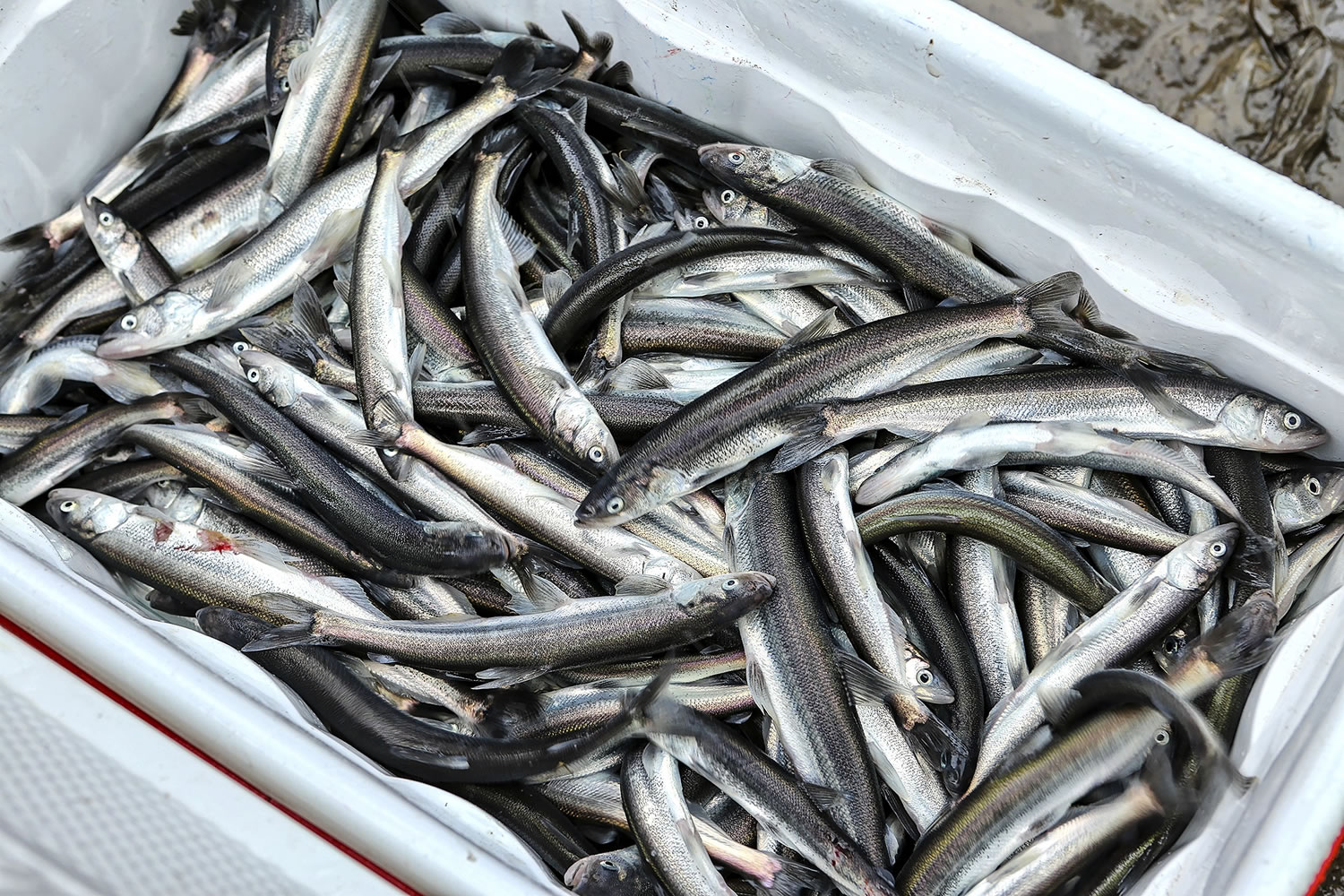The Washington Department of Fish and Wildlife said today it will wait and see if enough smelt return to warrant a sport-dipping season in the lower Cowlitz River in 2017.
Oregon plans a similar approach regarding the Sandy River.
A mediocre-to-poor smelt run is expected in the Columbia River and its tributaries this year.
Brad James, a biologist for the Washington Department of Fish and Wildlife, said a smelt return of around 3 million pounds is expected, compared to a little more than 5 million pounds in 2016.
Columbia River smelt are listed under the federal Endangered Species Act.
The Columbia River Compact today adopted eight seven-hour commercial fishing periods in February in the lower Columbia, essentially to serve as research fisheries. The small net fleet will fish from 7 a.m. to 2 p.m. on Mondays and Thursdays from Woodland downstream.
Commercial landings have ranged from 4,820 to 18,560 pounds in the past three years.
Washington intends to use a daily average of 150 pounds of smelt per commercial landing as the trigger for recommending a sport-dipping season in the Cowlitz.
If Washington does allow a season, it would be a single six-hour period in the Cowlitz. Tributary landings ranged from 141,050 to 290,770 pounds in the past three years.
Gary Soderstrom, a longtime commercial smelt fisherman, said there was an early return of smelt in December and that the Columbia and Grays rivers have smelt in them now.
Using pounds per commercial landing as a measurement of smelt abundance is a flawed method, Soderstrom said.
“You might only have a 50-pound market or a 100-pound market,’’ he said. “You get what you can sell. It’s no indicator of what’s going on out there.’’
With the end of sturgeon retention in the lower Columbia sport fishery, the bait market for smelt is gone, Soderstrom said. More time is needed to develop a food market for smelt, he added.
“These are ESA-listed,’’ said Ron Roler, Columbia River policy coordinator for the Washington Department of Fish and Wildlife. “This is the only species where there is directed harvest on ESA-listed fish.’’
The states have to be conservative, he said.
“We’re not trying to punish anybody,’’ Roler said.
Jack Marincovich of the Columbia River Fisheries Protective Union, a commercial group, said Clifton Channel is full of marine mammals apparently feeding on smelt.
Sturgeon — Washington and Oregon took no action on setting a closure date for the winter portion of the sturgeon retention season in the Bonneville pool of the Columbia River.
John North of the Oregon Department of Fish and Wildlife said the catch estimate for Bonneville pool through Sunday is just 16 sturgeon out of a guideline of 325.
A closure decision likely will be made in mid-February or early March depending on catches.
Fourteen sturgeon have been retained in The Dalles pool on a catch guideline of 100. Seven sturgeon have been retained in the John Day pool on a catch guideline of 105.




